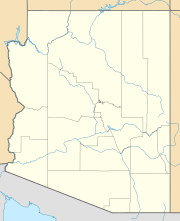Explorer's Rock facts for kids
Quick facts for kids Explorer's Rock |
|
|---|---|
| Geography |
Explorer's Rock was a big rock in the Colorado River. It was a danger to boats traveling between Arizona and Nevada in the 1800s. This rock got its name after a steamboat called the Explorer hit it. This happened during an important trip led by Lieutenant Joseph C. Ives in 1857 and 1858. The Explorer was exploring the Colorado River of the West.
Explorer's Rock was located about 4 miles north of El Dorado Canyon. This spot is just east of Squaw Peaks.
Contents
A Danger to River Travel
Explorer's Rock was a major problem for steamboats and other boats in the 1800s. It made traveling up or down the Colorado River very risky. This was especially true for boats going between El Dorado Canyon and places like Callville or Rioville.
The rock was hidden just below the water's surface. It was in a calm part of the river, right after a small, fast-moving section.
The Steamboat Explorer Hits the Rock
In 1858, Lieutenant Joseph C. Ives was exploring the Colorado River. His iron-hulled steamboat, the Explorer, was trying to go past the entrance of the Black Canyon of the Colorado. The crew put on a lot of steam to get through a rapid. After the rapid, the water became calm. Everyone was looking into the canyon when the Explorer suddenly crashed into a hidden rock.
The crash was very strong. Some crew members near the front of the boat were thrown into the water. Others were thrown to the bottom of the boat. The boiler moved out of place, and the steam pipe bent. Part of the boat's side was torn away. Everyone thought the boat would sink or explode.
Luckily, the boat stayed afloat. Captain David C. Robinson quickly had a rope taken to a small boat. The steamboat was then pulled to a nearby gravel beach. They found that the front of the boat had hit the rock directly. The metal parts at the front were torn, but no hole was made in the hull. The boat was safe. The other damage could be fixed in a day or two.
Examining the Hidden Rock
After the crash, Lieutenant Ives and Captain Robinson went to look at the rock. They found it was in the middle of the river channel. It had steep sides and was shaped like a cone. The very top of the rock was only about four inches below the water's surface. Ives realized how lucky they were. If the boat had hit the rock even slightly differently, the metal front of the boat would have been ripped open easily.
In 1885, a report suggested blasting away the top of Explorer's Rock. This would have made the river safer for boats. However, this plan was never carried out.
Where is Explorer's Rock Today?
Explorer's Rock is still in its original spot. However, it is now much deeper underwater. This is because the area became part of Lake Mohave after the construction of the Hoover Dam.


